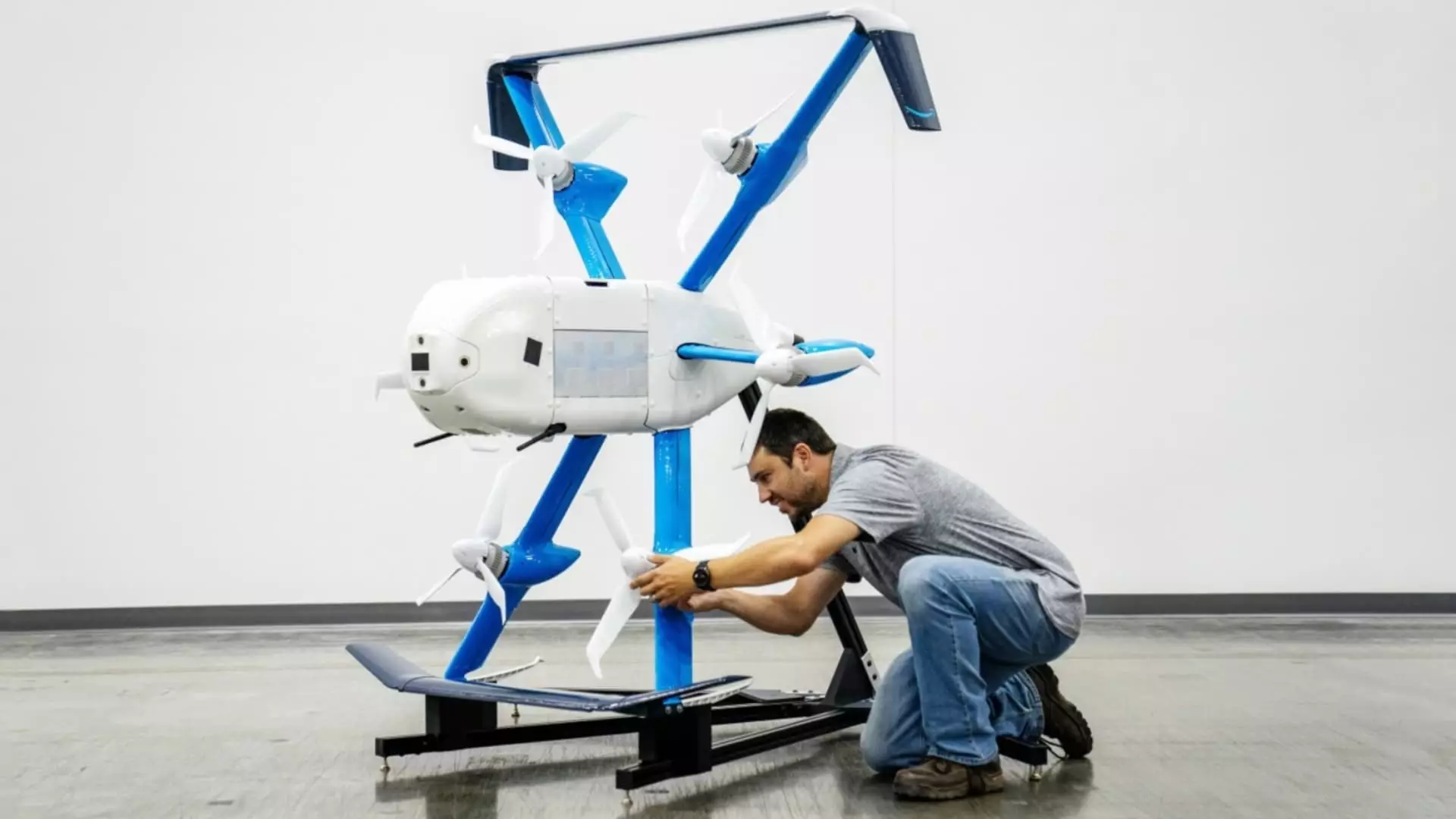The world of logistics is experiencing a technological revolution, and Amazon is at the forefront of this shift with the introduction of its MK30 delivery drone. Recently receiving regulatory approval, this drone signifies a critical step in Amazon’s ongoing quest to redefine package delivery. However, amidst the excitement, one must critically analyze the implications of this development, its potentials, and the challenges it may face moving forward.
Amazon’s MK30 drone, which was unveiled in November 2022, aims to enhance delivery efficiency by providing a quieter and smaller alternative to its predecessors. The Federal Aviation Administration (FAA) has granted Amazon the green light to operate this drone beyond the visual line of sight and over extended distances, an essential feature for scaling the delivery operation. This approval follows an earlier, more limited waiver which only allowed operations in College Station, Texas. Such regulatory milestones mark significant progress, yet the journey to full operational deployment remains fraught with complexities.
The approval to commence deliveries near Phoenix, Arizona, particularly in Tolleson, signals Amazon’s commitment to integrating drone technology into its distribution network. The choice of this locale is strategic, aiming to streamline logistics by utilizing existing warehouses and enabling quicker packages to reach customers. As Amazon positions to expand its drone operations, one must wonder whether these advancements will lead to the expected efficiencies or, conversely, create logistical complications.
Despite the enthusiasm surrounding the MK30, a looming question pertains to the persistent challenges faced by Amazon’s Prime Air program. Years of development and substantial investment have met regulatory obstacles that have resulted in missed deadlines and setbacks. Amazon’s history, marked by layoffs and departures of pivotal executives, raises concerns regarding the stability and direction of the drone program.
Adding to these organizational challenges is the community resistance Amazon has encountered during its testing phases. Residents in various testing locations, particularly College Station, have expressed their grievances about noise levels, leading to mayoral involvement and complaints directed toward the FAA. This situation underscores the delicate balance between technological advancement and social acceptance. The promise of faster deliveries may not hold much appeal if residents are left to endure disruptive noise in their neighborhoods.
Amazon is not alone in this venture; many companies are aggressively pursuing drone delivery, each trying to carve out a niche in this emerging market. Rivals such as Wing (a subsidiary of Alphabet), UPS, Walmart, and numerous tech startups present significant competition. While Amazon’s extensive resources position it favorably, the market’s breadth and diversity mean that no player can afford complacency. In this fast-evolving landscape, partnerships and technological advancements will be critical to shaping the future of drone delivery.
Additionally, with the growing emphasis on sustainability, delivering via drone is often touted as an eco-friendly alternative to traditional delivery trucks. Whether the MK30 can truly advance this cause remains to be seen. Stakeholders may demand accountability not just in terms of operational efficiency but also regarding environmental impacts. This expectation further complicates Amazon’s pursuit of drone delivery, requiring them to also navigate ecological concerns.
The launch of Amazon’s MK30 drone reveals a thrilling prospect for the logistics sector; however, the reality is that this journey is just beginning. Regulatory approval and strategic deployment in Phoenix reflect progress, yet the hurdles faced cannot be overlooked. Noise complaints and logistical challenges loom large, and only time will reveal whether these innovative machines become a staple of our delivery systems or merely a fleeting concept.
Overall, while Amazon continues to innovate and push boundaries, the success of its drone program hinges not only on technological advancements but on community relations, regulatory alignment, and competitive pressures. The road ahead will surely be eventful, warranting close observation from industry players and consumers alike. Thus, amid the excitement, critical appraisal of this endeavor remains pivotal as Amazon attempts to reshape the future of delivery.

